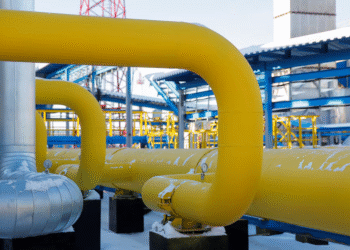CALGARY (Realist English). Canada’s oil sands producers — including Imperial Oil, Suncor, and Cenovus — have become some of the most cost-efficient players in North America’s energy market, leveraging advanced automation, lower breakeven prices, and resilient asset structures. As global oil prices come under pressure from economic uncertainty, rising OPEC+ output, and U.S. tariffs, Canada’s oil sands sector is standing firm.
Over the past decade, the oil sands — once deemed too expensive by global majors like BP, Chevron, and Total — have been transformed through aggressive cost-cutting and technological innovation. Industry insiders and a Reuters analysis show Canadian oil sands companies now require a WTI price as low as $40.85 to $43.10 per barrel to break even, compared to $65 for U.S. shale producers, according to the latest Dallas Federal Reserve survey.
Imperial Oil has deployed robotic dogs at its Cold Lake facility to conduct routine inspections, saving C$30 million ($22 million) annually. Autonomous trucks at its Kearl mine have boosted output by 20% since 2023. Meanwhile, Suncor operates the world’s largest hydraulic shovel at its Fort Hills site and has cut its breakeven price to $42.90 per barrel through efficiency gains.
Unlike shale wells, which decline rapidly, oil sands projects involve high initial costs but offer decades of stable output. Canadian Natural Resources, for example, has over 20 billion barrels in reserves and expects its Horizon mine to operate for more than 40 years.
Since 2021, Canada’s five largest oil sands producers have reduced their combined net debt by C$22 billion, now standing at C$33.9 billion. This financial discipline has allowed firms to maintain dividends and repurchase shares, even amid falling oil prices.
“They’re not geopolitically risky, and they have very appealing characteristics around productivity and costs,” said Kevin Burkett, portfolio manager at Burkett Asset Management.
As some U.S. politicians push for new pipelines from Alberta to the Pacific, the oil sands — long criticized for their carbon footprint — are increasingly viewed as a strategic, stable energy source in a volatile global market.


















